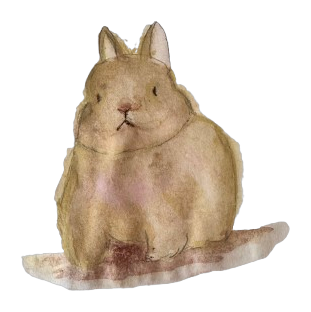Why I Love Classic Lolita
11 Mar 2022 - strawberryjam
I have been nudged into writing this post, I do not feel I can put it well in words, but I will try. And I apologize in advanced with all the pictures having different shitty instagram filters :(
What I like most about classic lolita is the preference towards details over prints. I find that all small well thought out details added all together make a beautifully crafted dress.
Details could be elements like pintucks. These are just small portions of fabric that are folded and sewed in. They are a beautiful decorative element you can add to a more plain piece.
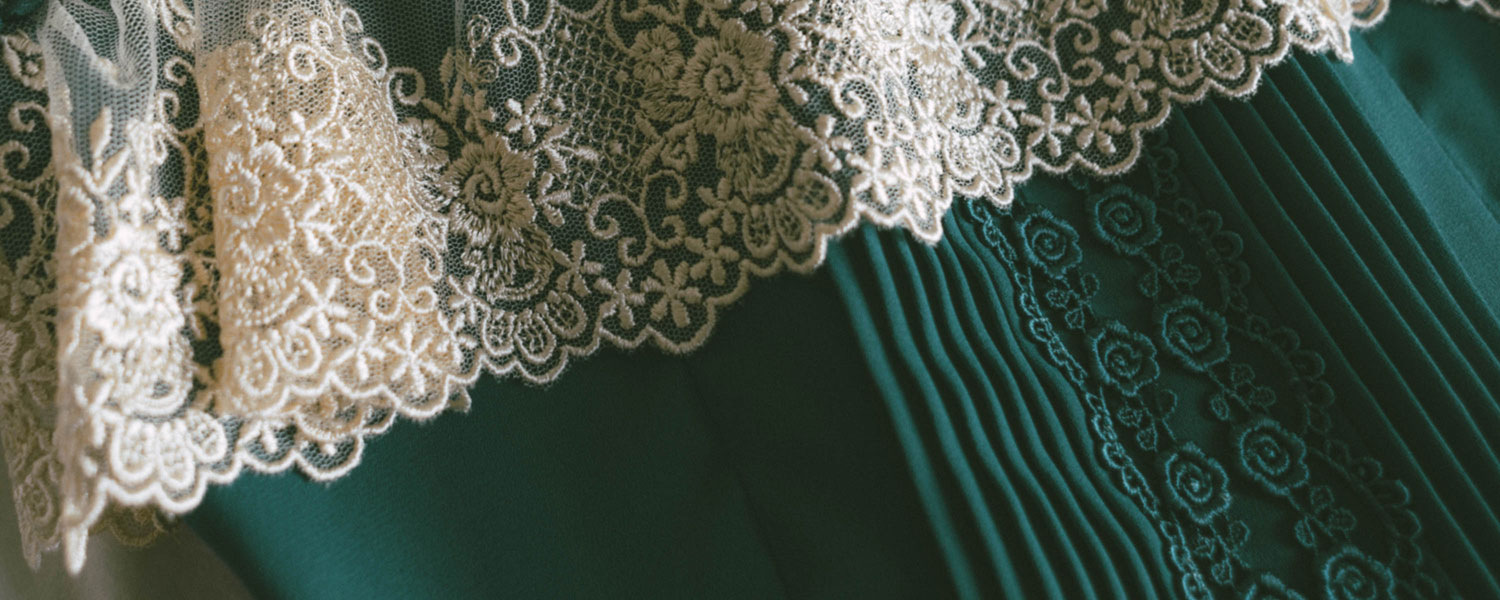
And I like how important it is to have colors to be exactly the same.. the turquoise lace is the same color as the turquoise fabric. This sounds like such a simple thing, but you would be surprised after looking at mass produced clothing how all these little things just do not quite add up.
If the piece does not have decorative elements that are the same color, then typically they are still color coordinated very well, i.e. pastel colors go together, cool colors go together, etc. There are no sacrifices for cheaper materials that may be less suited to the dress.
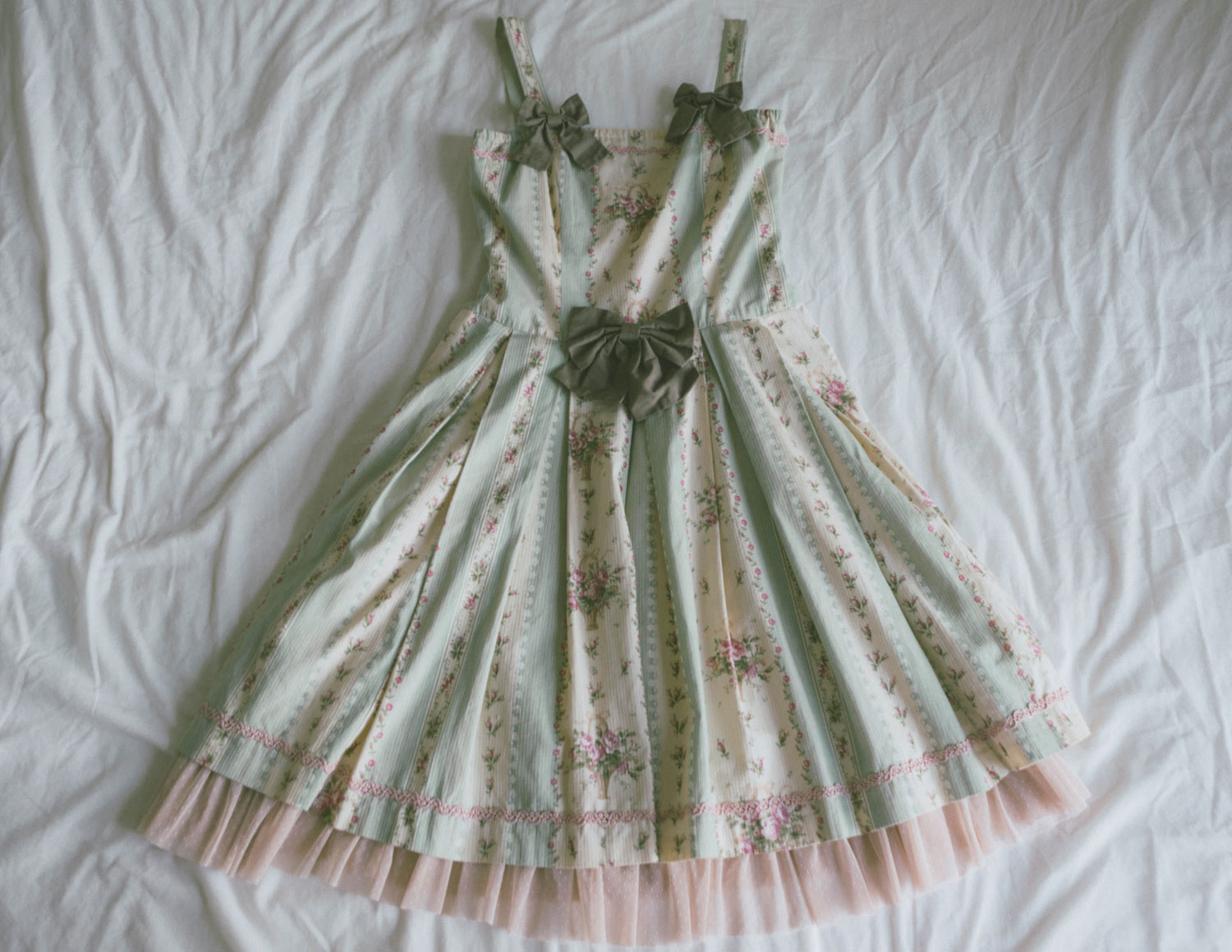
Dusty pink used to be a very unappreciated color, but fast fashion has taken to it. Before then, Mary Magdalene had quite a lot of dusty pink dresses and I assume it was difficult to find matching lace and other details to coordinate with their dresses.
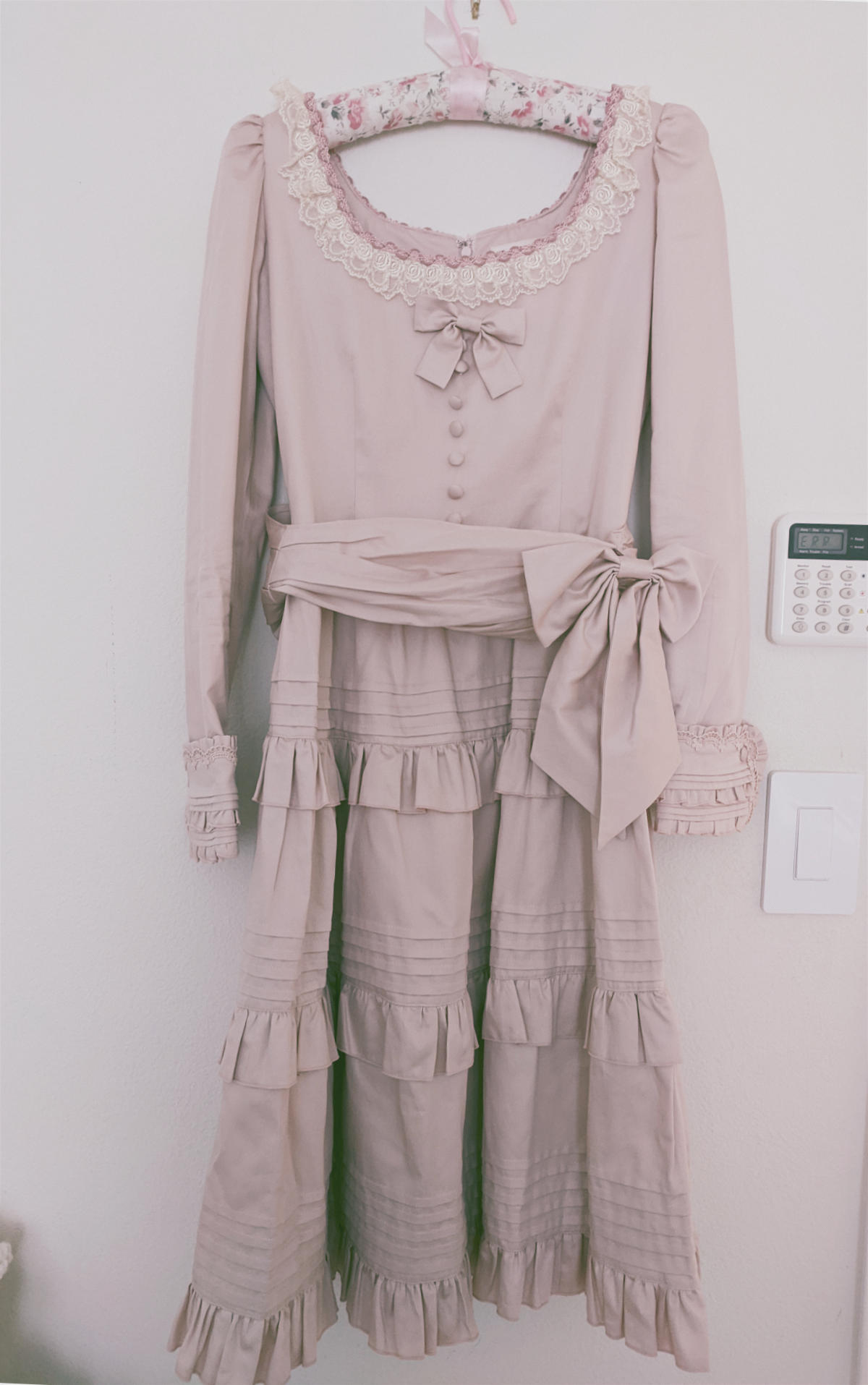
Details like lace are important. This is Mary Magdalene's custom lace. It's a very soft luxurious lace, nothing scratchy. Custom lace also enables Mary Magdalene to pick the perfect color, design, size, shape, etc. they want to pair with a dress.
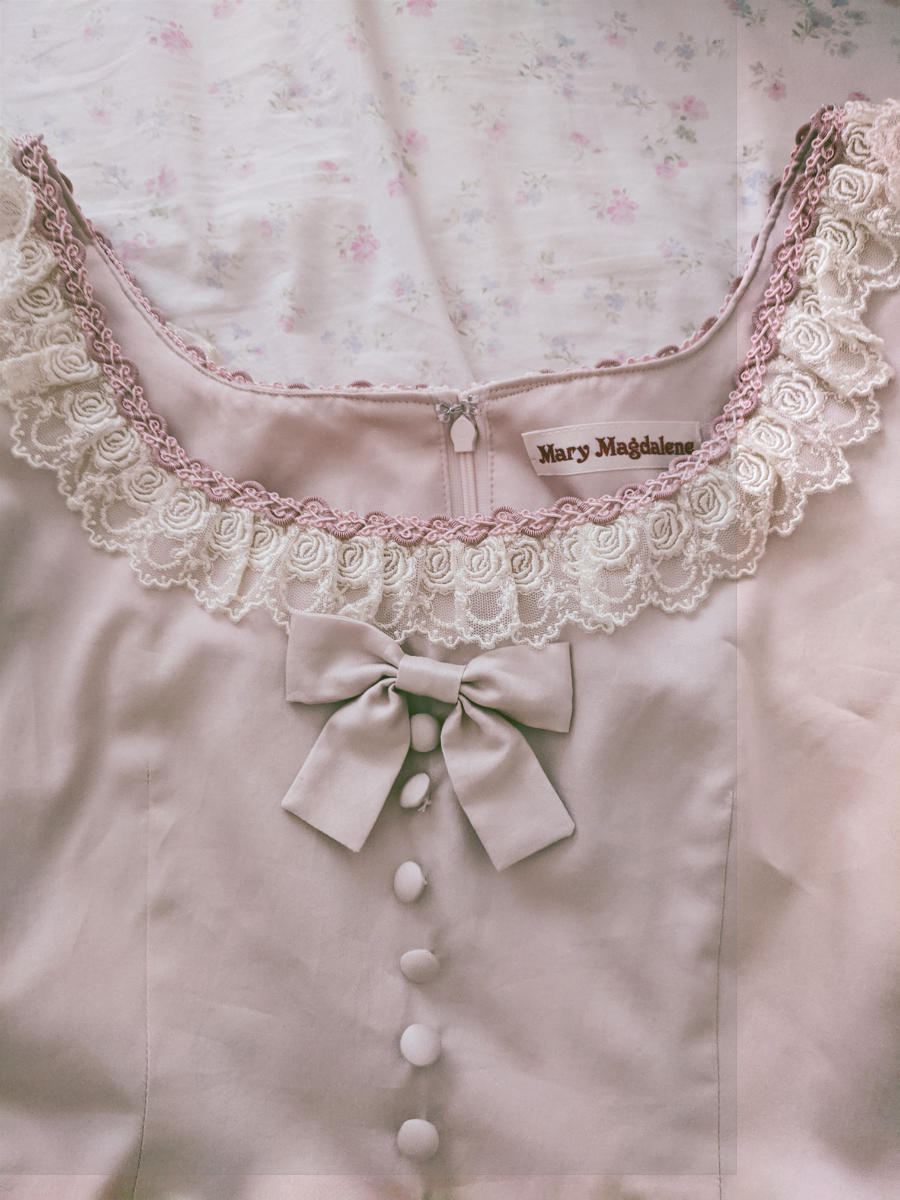
And here is a picture of the bustle on Farutetto. I believe that bustles became a popular dress feature in the early 1800's. Given that lolita finds its roots in historical fashion, it is a bit puzzling how no other dresses (at least that I am aware of) utilize bustles. Having said that, I think that this is a beautiful element to add to a dress. This sums up to a dress with refined, ladylike details.
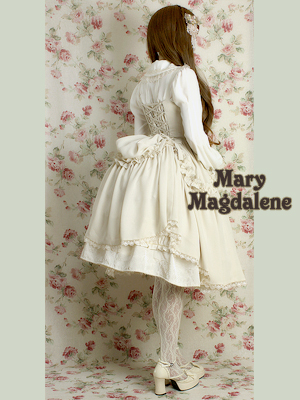 |
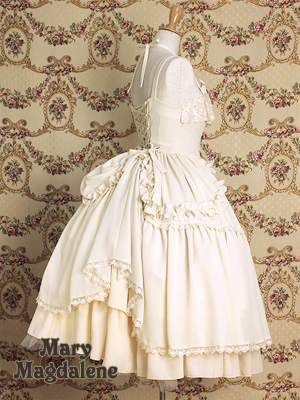 |
The front of Farutetto at the top of the skirt also has fabric that flares out to start the bustle on the side making for a very flowy, wispy kind of look.
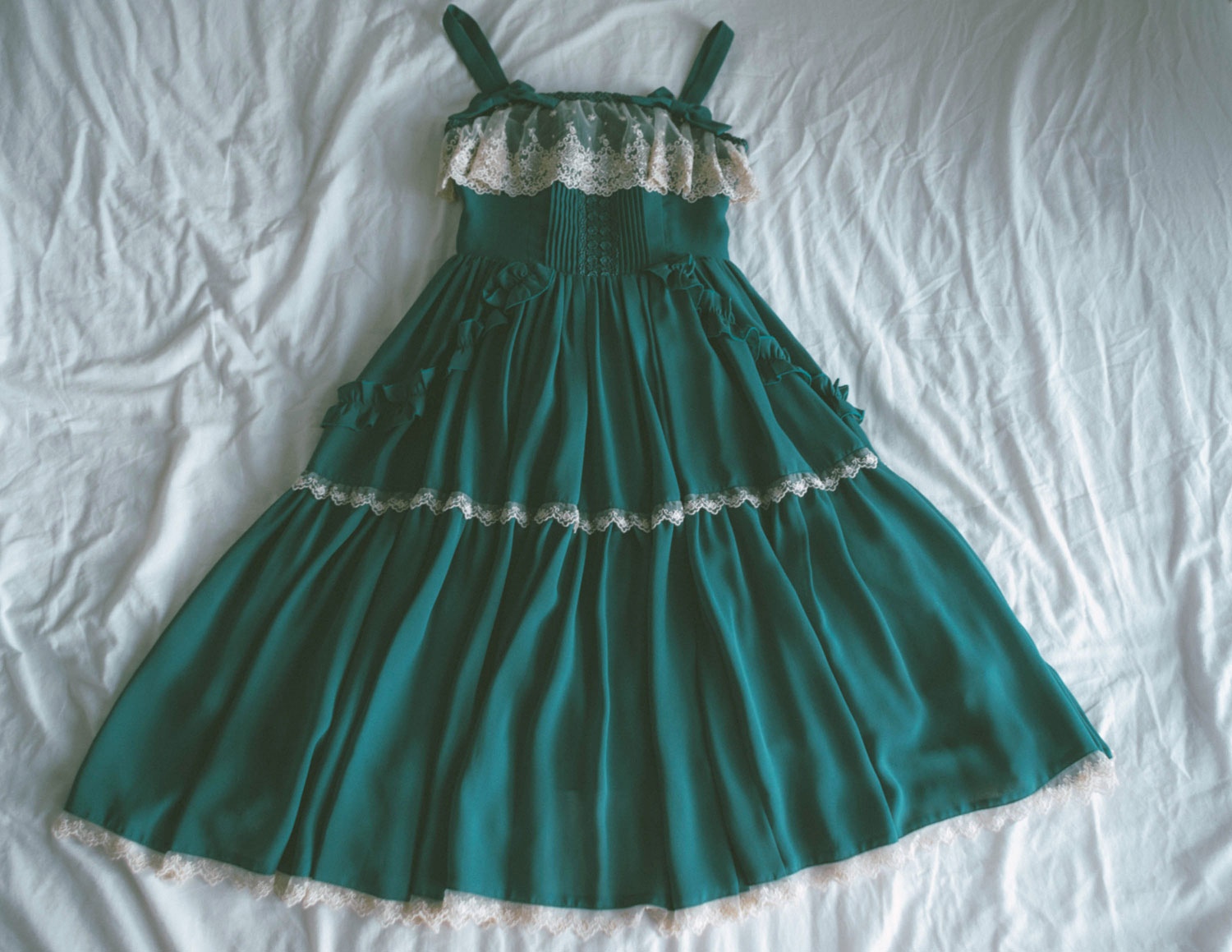
These are some headdresses by Mary Magdalene. Again, you see the exact color matching (lace included). These headdresses are on the thin side compared to other lolita headdresses. They are not statement pieces, but something you admire the small details of. On the pink headdress, I am also absolutely enamored by the pink ribbon interlacing the lace.
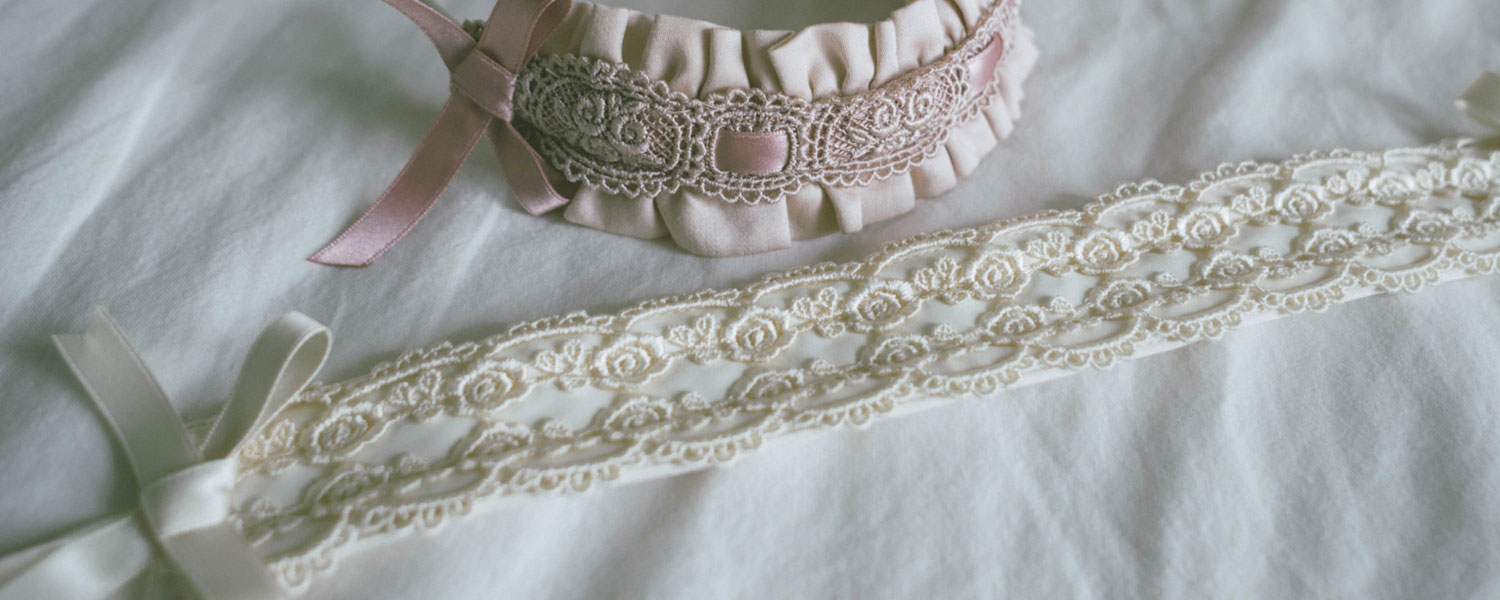
So this is another detail, but it may not apply to others. Mary Magdalene's dresses offer a very tailored fit. Obviously this is does not work for all body types. As a petite Asian woman, Mary Magdalene's dresses fit me like a glove. The dresses make me look like I have a bust (lol) and are perfectly curved to my waist to make it look smaller. There is no other lolita brand that fits me this well. All the separate panels on this dress sewed together make for a very tailored look that accentuates one's feminine features.
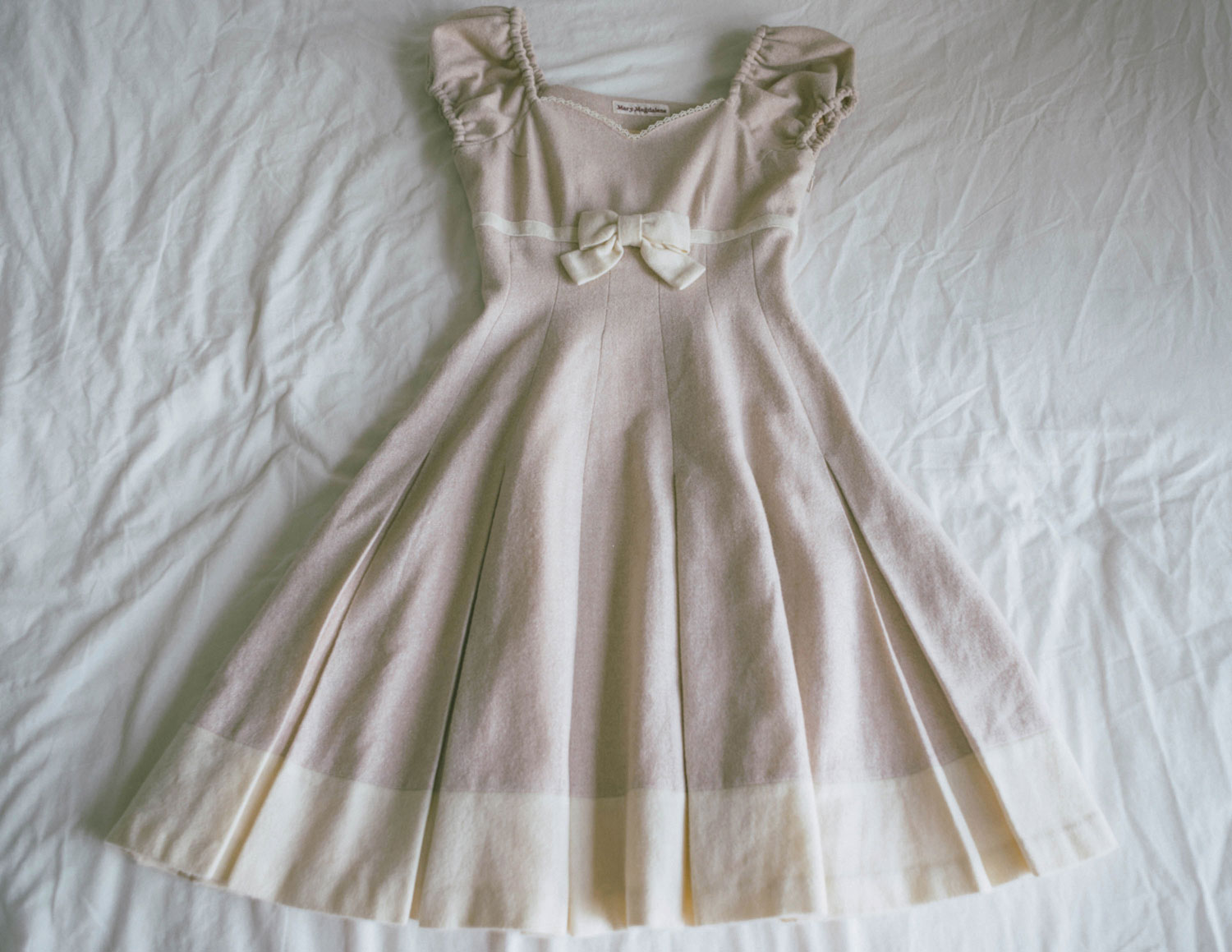
Overall, I think classic lolita really requires an eye to attention. This substyle never screams for you to look at it, but is very sophisticated and something to be appreciated as you examine all the details more closely.
Conversely there are many lolita dresses that depend solely on the print to make a piece. While I do like some of these dresses a lot, it's also what enables mass production and less attention to the details.
Here is Panier de Fleurs by Juliette et Justine. It has a beautifully printed design, it is a dress I really regret not purchasing during the reservation period. But if you look very closely, all there is to it is the print, there are no further details like pintucks, lace, etc. The skirt portion of the dress is pleated, but that is a rather basic detail. The bright vibrant colors also scream statement piece as well. I have a soft spot for this dress because of all the rabbits on it and well, you can guess I like rabbits from the name of this website.
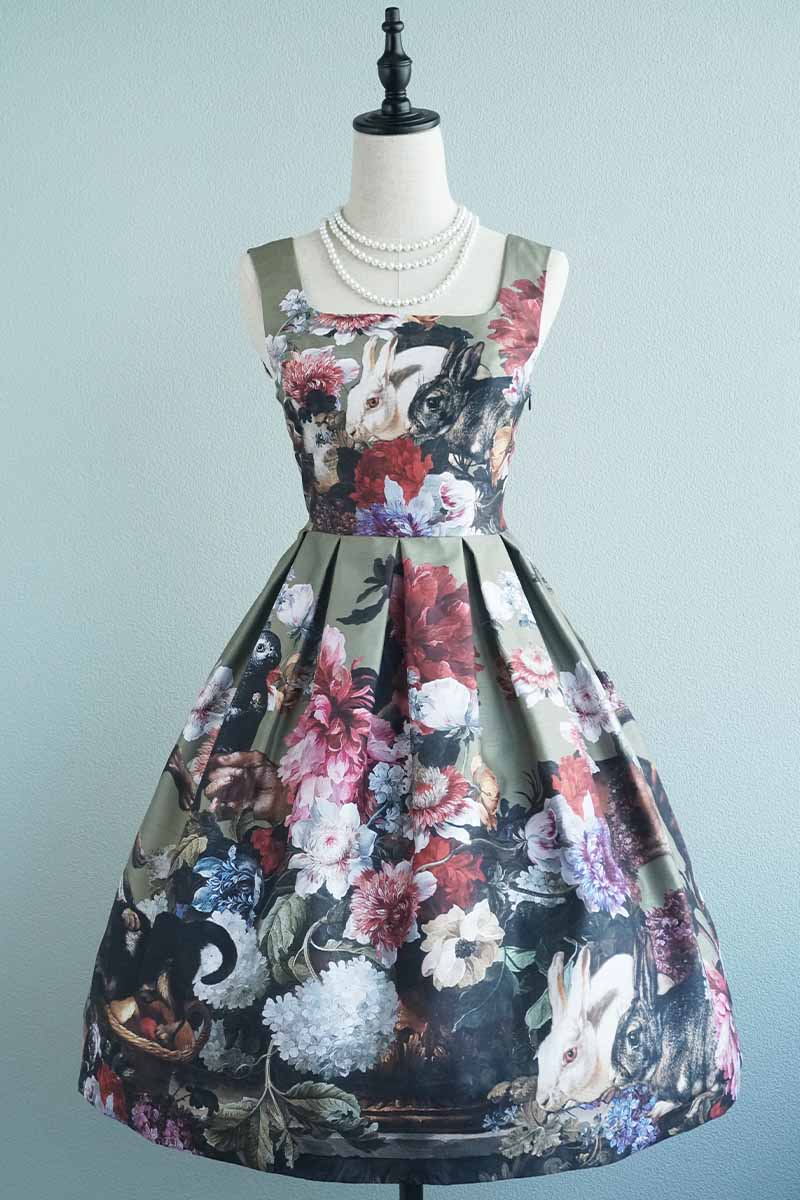
I do not believe printed lolita dresses are fast fashion (generally not). But normal fast fashion really does not live up to anywhere near these standards. The quality of the fabric, sewing, etc. are all poor. It is fast fashion because the garments can quite simply break down after a couple of wears (hopefully not as it is very wasteful). There is very little thought put into the details. You can expect any lace to be scratchy and quite frankly, uncomfortable to wear. If the manufacturers do add lace, you can bet they do not need to be the same color. As an example as long as the colors of elements are both pink, it doesn't matter if they are warm or cool, wildly different in color of shade (dark vs. light), etc. I also believe that while lolita dresses can be on the delicate, fragile side, they are created with much higher quality materials and thus can last longer. This is not a blanket true statement for all dresses especially Juliette et Justine's non print pieces.
By the way, what I find most disheartening is that printed lolita dresses are what is popular. I keep mentioning my favorite brand Mary Magdalene, but I think it says a lot that they probably only have 1-2 staff members. I purchased a dress from them years ago and the person that confirmed my order was the designer of the brand. Sadly Mary Magdalene has had very little releases over the recent years. On the other hand, some of the more popular lolita brands have many staff members and even store fronts.
I have an obvious bias to Mary Magdalene, but I do absolutely love Victorian Maiden and older Juliette et Justine pieces (they are starting to turn around with non printed dresses though!). Here are dresses from both brands to admire as well.
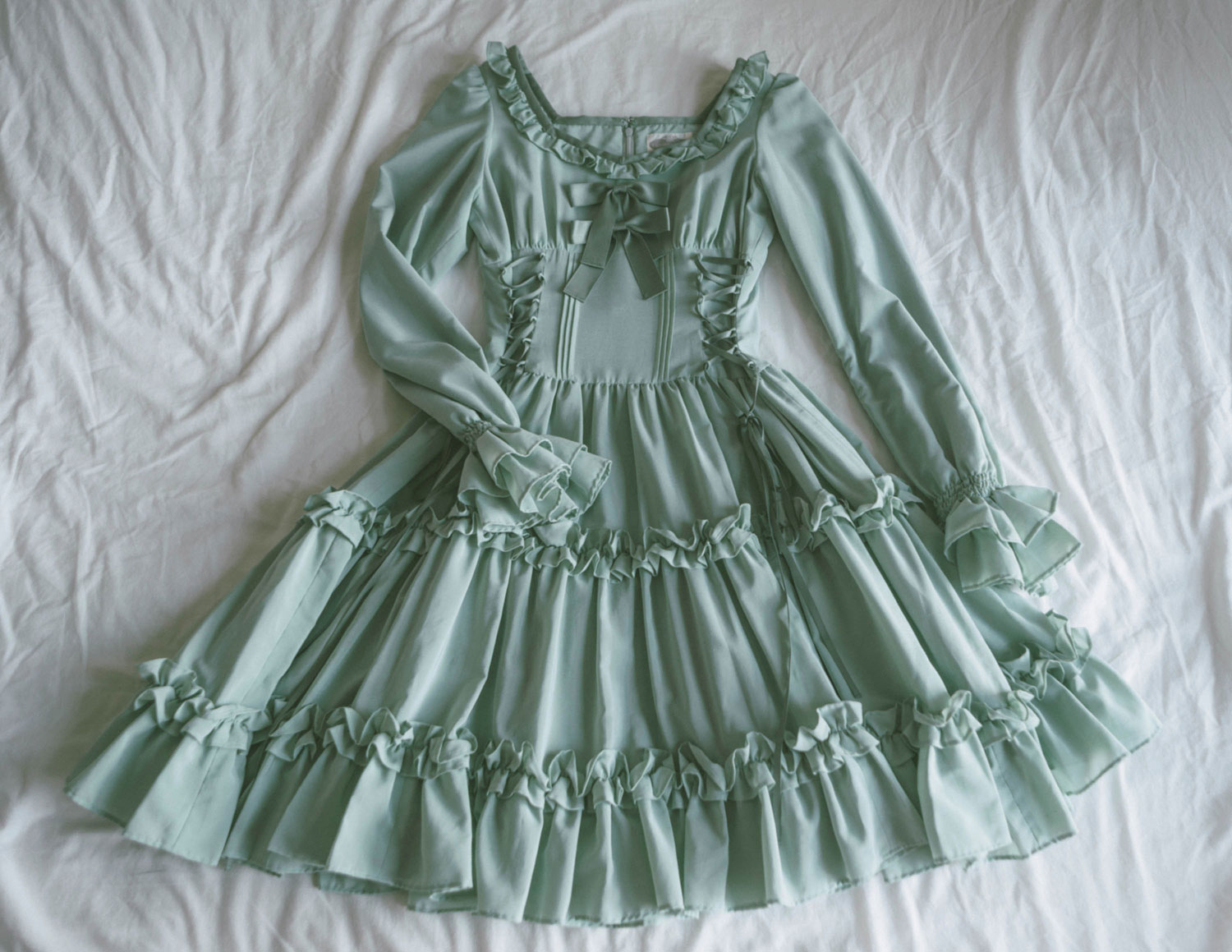
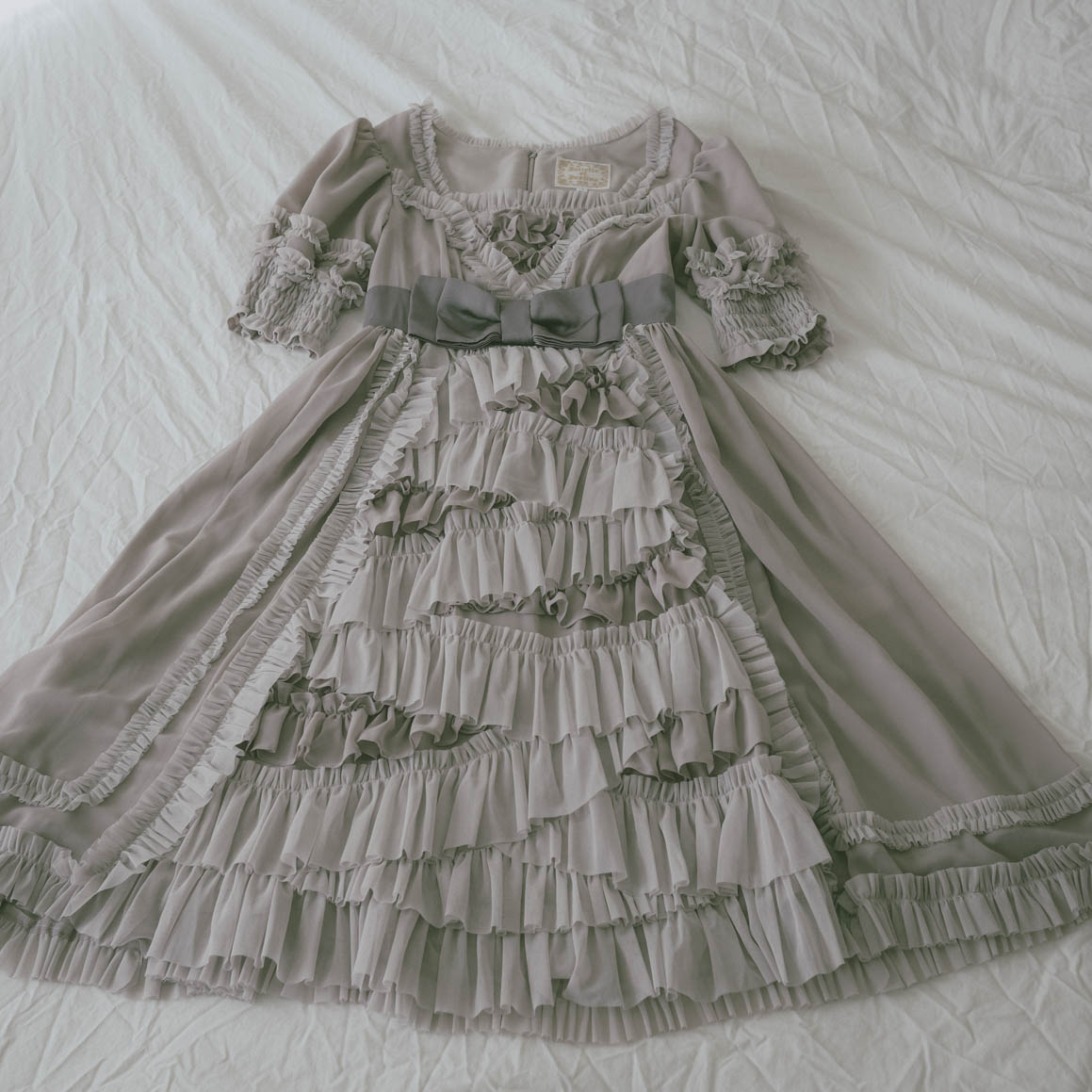
P.S. I am no way in an expert in how manufactured garments are made. Perhaps Mary Magdalene did not have to lace with the exact matching colors, but instead dyed it themselves. Regardless, they greatly care that the fabric matches with the design elements.
Leave a comment
Comments are manually approved before appearing.
Your email will not be published.
